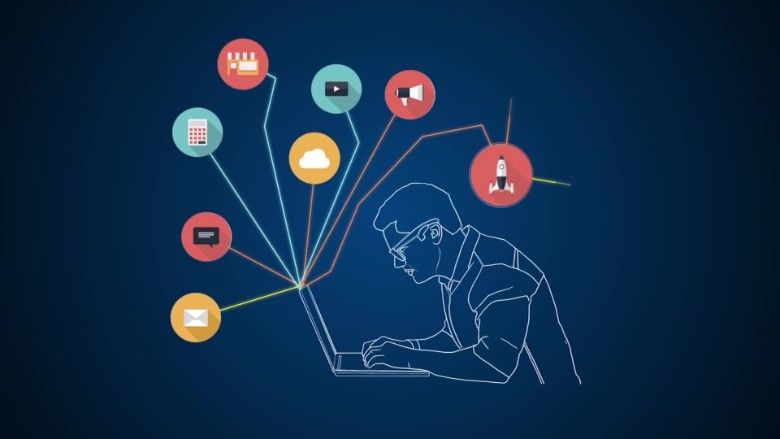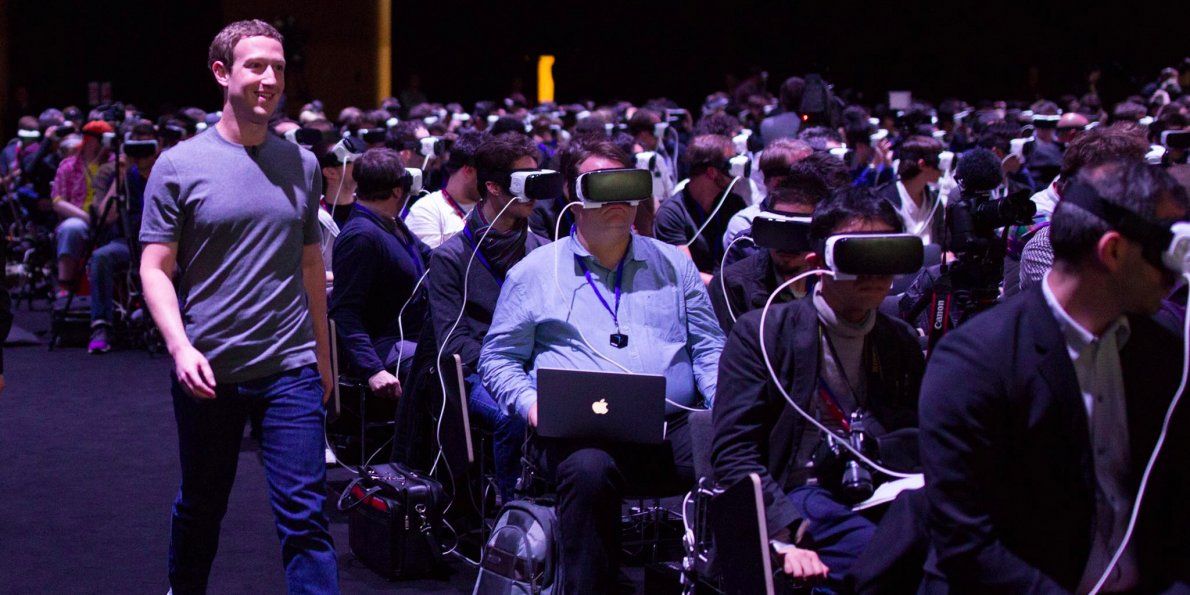Google Brain software engineer Quoc Le shares his belief that artificial intelligence and deep learning will shape the future of the world.
Help start a revolution in heathcare!
Sign onto our new letter of support and let your Senator know — the time is NOW to fund the first ever FDA approved research to target ALL the diseases of aging at once.
http://tame.healthspanpolicy.org/
Please help spread the word by sharing.
Whether in the brain or in code, neural networks are shaping up to be one of the most critical areas of research in both neuroscience and computer science. An increasing amount of attention, funding, and development has been pushed toward technologies that mimic the brain in both hardware and software to create more efficient, high performance systems capable of advanced, fast learning.
One aspect of all the efforts toward more scalable, efficient, and practical neural networks and deep learning frameworks we have been tracking here at The Next Platform is how such systems might be implemented in research and enterprise over the next ten years. One of the missing elements, at least based on the conversations that make their way into various pieces here, for such eventual end users is reducing the complexity of the training process for neural networks to make them more practically useful–and without all of the computational overhead and specialized systems training requires now. Crucial then, is a whittling down of how neural networks are trained and implemented. And not surprisingly, the key answers lie in the brain, and specifically, functions in the brain and how it “trains” its own network that are still not completely understood, even by top neuroscientists.
In many senses, neural networks, cognitive hardware and software, and advances in new chip architectures are shaping up to be the next important platform. But there are still some fundamental gaps in knowledge about our own brains versus what has been developed in software to mimic them that are holding research at bay. Accordingly, the Intelligence Advanced Research Projects Activity (IARPA) in the U.S. is getting behind an effort spearheaded by Tai Sing Lee, a computer science professor at Carnegie Mellon University’s Center for the Neural Basis of Cognition, and researchers at Johns Hopkins University, among others, to make new connections between the brain’s neural function and how those same processes might map to neural networks and other computational frameworks. The project called the Machine Intelligence from Cortical Networks (MICRONS).
Russia’s NextGen Robots are coming.
Russian military institutions are working on a program of robotization of the army that will introduce combat robots able to act independently on the battlefield, deputy head of the Defense Ministry Pavel Popov said in an interview with the Moskovsky Komsomolets newspaper.
Special military units of robots will be operated by a united control system, Popov said, adding that many robotic and pilotless vehicles are already employed in the Russian military.
Military expert Viktor Murakhovsky confirmed that Russia is actively developing new robotic machinery, though the concept is not widely discussed, Moskovsky Komsomolets reported.
Here is a question that keeps me up at night…
Is the San Bernardino iPhone just locked or is it properly encrypted?
Isn’t full encryption beyond the reach of forensic investigators? So we come to the real question: If critical data on the San Bernardino iPhone is properly encrypted, and if the Islamic terrorist who shot innocent Americans used a good password, then what is it that the FBI thinks that Apple can do to help crack this phone? Doesn’t good encryption thwart forensic analysis, even by the FBI and the maker of the phone?
 In the case of Syed Rizwan Farook’s iPhone, the FBI doesn’t know if the shooter used a long and sufficiently unobvious password. They plan to try a rapid-fire dictionary attack and other predictive algorithms to deduce the password. But the content of the iPhone is protected by a closely coupled hardware feature that will disable the phone and even erase memory, if it detects multiple attempts with the wrong password. The FBI wants Apple to help them defeat this hardware sentry, so that they can launch a brute force hack—trying thousands of passwords each second. Without Apple’s help, the crack detection hardware could automatically erase incriminating evidence, leaving investigators in the dark.
In the case of Syed Rizwan Farook’s iPhone, the FBI doesn’t know if the shooter used a long and sufficiently unobvious password. They plan to try a rapid-fire dictionary attack and other predictive algorithms to deduce the password. But the content of the iPhone is protected by a closely coupled hardware feature that will disable the phone and even erase memory, if it detects multiple attempts with the wrong password. The FBI wants Apple to help them defeat this hardware sentry, so that they can launch a brute force hack—trying thousands of passwords each second. Without Apple’s help, the crack detection hardware could automatically erase incriminating evidence, leaving investigators in the dark.
Mitch Vogel is an Apple expert. As both a former police officer and one who has worked with Apple he succinctly explains the current standoff between FBI investigators and Apple.
The iPhone that the FBI has is locked with a passcode and encrypted. It can only be decrypted with the unique code. Not even Apple has that code or can decrypt it. Unlike what you see in the movies, it’s not possible for a really skilled hacker to say “It’s impossible“” and then break through it with enough motivation. Encryption really is that secure and it’s really impossible to break without the passcode.
What the FBI wants to do is brute force the passcode by trying every possible combination until they guess the right one. However, to prevent malicious people from using this exact technique, there is a security feature that erases the iPhone after 10 attempts or locks it for incrementally increasing time periods with each attempt. There is no way for the FBI (or Apple) to know if the feature that erases the iPhone after 10 tries is enabled or not, so they don’t even want to try and risk it.
 So the FBI wants Apple to remove that restriction. That is reasonable. They should, if it is possible to do so without undue burden. The FBI should hand over the iPhone to Apple and Apple should help them to crack it.
So the FBI wants Apple to remove that restriction. That is reasonable. They should, if it is possible to do so without undue burden. The FBI should hand over the iPhone to Apple and Apple should help them to crack it.
However, this isn’t what the court order is asking Apple to do. The FBI wants Apple to create software that disables this security feature on any iPhone and give it to them. Even if it’s possible for this software to exist, it’s not right for the FBI to have it in their possession. They should have to file a court order every single time they use it. The FBI is definitely using this situation as an opportunity to create a precedent and give it carte blanche to get into any iPhone without due process.
So the answer to your question is that yes it is that secure and yes, it’s a ploy by the FBI. Whether it’s actually possible for Apple to help or not is one question and whether they should is another. Either way, the FBI should not have that software.
Ever since Facebook purchased Oculus in 2014, Mark Zuckerberg has been speaking to promise of virtual reality as the next communications platform. Yesterday at the Mobile World Congress in Barcelona he punctuated those thoughts with a big announcement – the creation of an internal team dedicated to Social VR.
Led by Daniel James and Mike Booth, the team will work closely with Oculus as well as other divisions within Facebook to explore and build the future of social interaction in VR, the company says.
Facebook describes their work in VR as “still early” but Oculus has been working to lay the groundwork themselves with experiences like Toybox and an upcoming social SDK that will allow developers to easily implement key multiplayer and networking features into their experiences. In fact, Oculus’ dedication to Social VR is “the reason why [they’re] part of Facebook,” Oculus founder Palmer Luckey told us earlier this year.
Still the idea of a metaverse – a giant interconnected world like the ones in Snow Crash or Ready Player One – is something far off.
“It’s not happening in the immediate future,” Luckey said, “we’d much rather work and get this right over a longer period of time than rush into it at the start and be constrained by the design decisions that we make.” He says that it will take VR reaching a “critical mass” for there to be enough data to know how best to design how the future of social interaction will look.
Full event: https://youtu.be/dz057r6hGj4
Watch Mark Zuckerberg talks at Samsung Galaxy Unpacked 2016: VR is the next social platform.
At Samsung’s Unpacked event — where the Samsung Galaxy S7 and Samsung Galaxy S7 Edge were revealed — Zuckerberg explained about his fascination with VR and how he has been dreaming of using the technology since the age of 11.
Don’t forget to like, comment, and subscribe! Thank you.
Welcome to the future.
On Sunday, Facebook CEO and virtual reality enthusiast Mark Zuckerberg shared the image above on his Facebook profile.
The photo was taken this past weekend at the Mobile World Congress, a big tech conference in Spain.






